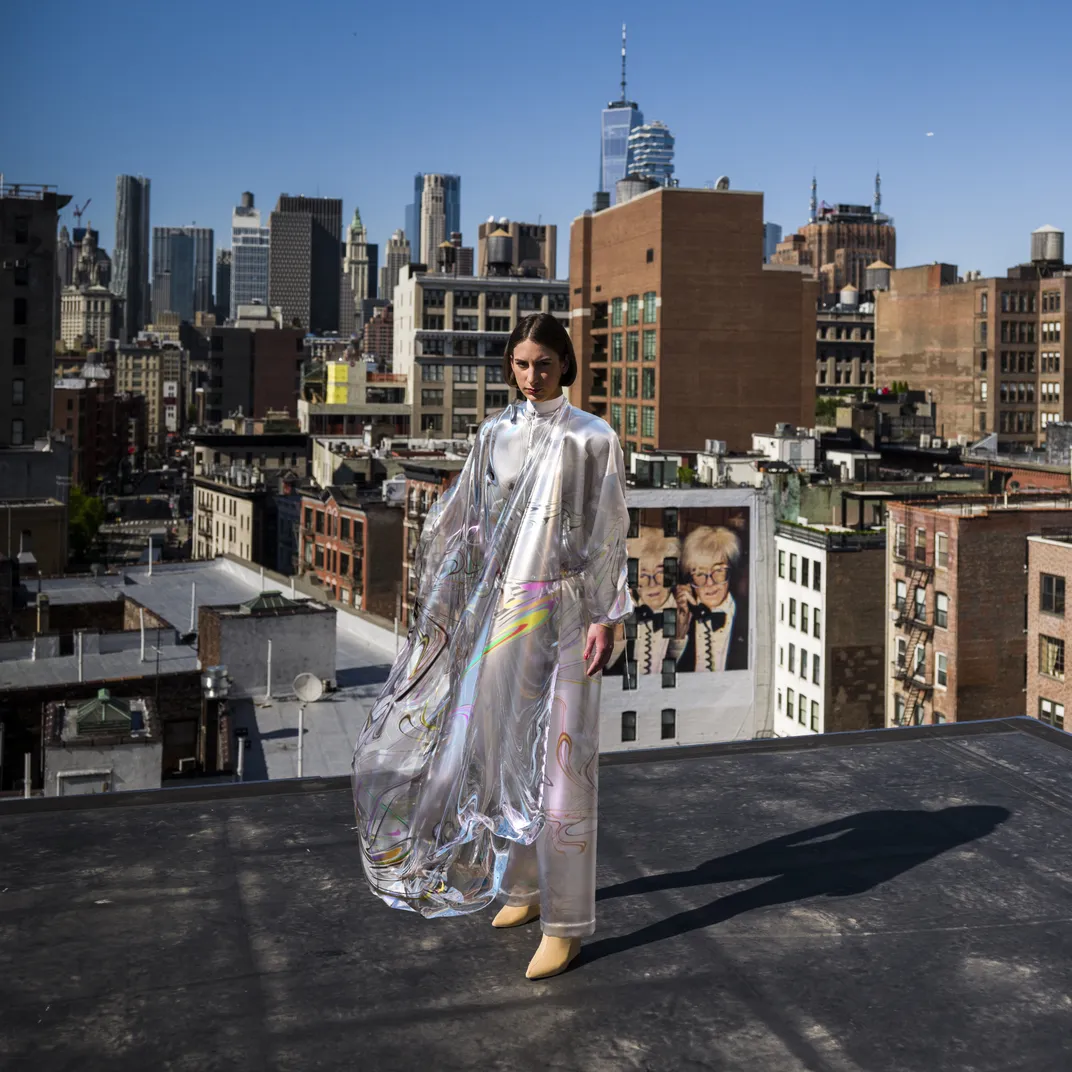Designers Are Selling Expensive Clothes That Don’t Exist—and People Are Actually Buying Them
Earlier this year, a digital-only dress sold at auction for $9,500
/https://tf-cmsv2-smithsonianmag-media.s3.amazonaws.com/filer/96/03/96031d65-35eb-4080-8623-f23f2bc6aebb/final_richard_v01.jpg)
In 1837, Hans Christian Andersen regaled audiences with the tale of a clothes-loving emperor who commissioned a suit made from cloth that would be invisible to anyone not clever enough to see it. As weavers pretended to craft the custom creation, the emperor—too embarrassed to admit he couldn’t actually see anything—similarly pretended to admire their work. When he finally debuted his “invisible” attire, the tittering public was well aware of the fact that their ruler was completely naked. Today, “The Emperor’s New Clothes” acts as a cautionary tale—at least to some readers. Others, it turns out, are still paying a hefty price for clothing that doesn’t actually exist.
Richard Ma, CEO of a San Francisco-based security company, recently spent $9,500 on a dress that only exists online. Per BBC News’ Cody Godwin, Dutch startup and fashion house the Fabricant crafted the dress using 2-D garment pattern-cutting software and 3-D design software. The team then digitally superimposed their creation onto an image of Ma’s wife, Mary Ren, for use on WeChat and her personal Facebook page.
“It's definitely very expensive, but it's also like an investment,” Ma tells Godwin. “In 10 years time, everybody will be 'wearing' digital fashion. It's a unique memento. It's a sign of the times.”
Fabricant is far from the only company embracing a digital-first model. In 2016, web avatar site Bitmoji teamed up with Bergdorf Goodman to allow users to outfit their avatars in looks straight from the runway: namely, digital versions of ensembles from Zac Posen, Alexander McQueen, Calvin Klein and other top designers.

Then, in November 2018, Scandinavian retailer Carlings released its first digital clothing collection, Neo-Ex. The 19 genderless pieces cost between €10 to €30, or roughly $11 to $33 USD. This low price point may explain why the collection sold out in just a month: “It sounds [kind of] stupid to say we 'sold out,' which is theoretically impossible when you work with a digital collection because you can create as many as you want,” Ronny Mikalsen, Carlings' brand director, explains to Godwin; still, Mikalsen adds, the brand decided to limit its production run to 12 offerings in order “to make it a bit more special.”
Other examples of online-centric fashion include the ASOS X Sims collaboration and a Fortnite option that allows users to buy digital Jordans and looks inspired by movie characters.
Real people aren’t the only fashionistas who wear digital clothing. Digital models can wear digital fashion, too. Instagram is already populated by virtual models with legions of followers and major sponsorship deals. Lil Miquela, for instance, has a thriving music career despite the fact that she is computer-generated.
Is digital fashion really that much stranger? After all, shifting gears to a digital-only model would considerably reduce the fashion world's enormous carbon footprint. In addition to being more environmentally friendly, the end result—an Instagram-worthy snapshot featuring the latest couture—is arguably the same.
“People think that this is not a real thing, but the numbers are off the charts,” Matthew Drinkwater, head of the Fashion Innovation Agency at London College of Fashion tells Vogue’s Maghan McDowell. “Fashion hasn't begun to tap into that. What might a Louis Vuitton or Off-White digital piece of clothing be like?”
Drinkwater estimates that it will take at least 5 to 10 years for digital clothing companies to start popping up everywhere.
“The future is here,” says Carlings' marketing manager, Ingeline Gjelsnes, in an interview with Matt Moen of Paper. “We need to adapt and be relevant to our customers as well as the next generation.”